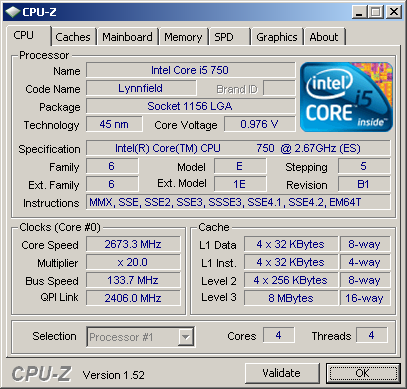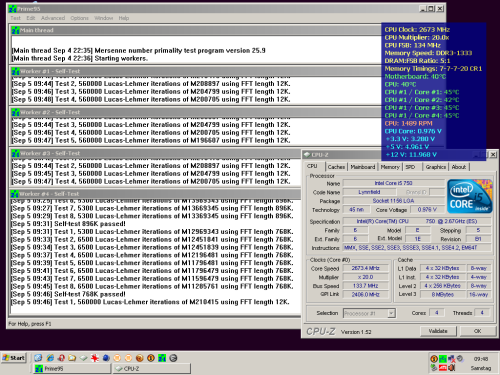Index
Page 6 of 10
MSI P55-GD80:
Features:
Intel P55
8+2-phase VRM
uPI semiconductors uP6218AM VRM controller cpu-portion
uPI semiconductors uP6212AG VRM controller northbridge-portion
2x Realtek RTL8111DL PCIe Gb LAN controller
JMicron JMB363 PCIe SATA II/PATA controller
JMicron JMB322 SATA port multiplier
Realtek ALC889
ICS 9LRS4116AL clock generator, branded as MSI OC Genie
passive cooling of chipsets/VRM
16Mb BIOS, version: various up to 1.6beta9
Mainboard Revision: 1.1
Slots:
3x PCIe 2.0 x16, x16 x0 x4 or x8 x8 x2
2x PCIe 2.0 x1 @ x0.5 speed
2x PCI
Memory:
4x Duale-Channel DDR3-slots for PC3-10667U memory up to 16GB
Storage:
6-Port SATA II featuring RAID 0, 1, 5, 0+1, JBOD
1-Port PATA
2-Port SATA II via port multiplier
Backpanel ports:
1x PS/2 keyboard
1x PS/2 mouse
2x Gb LAN
7x USB 2.0
1x eSATA II/USB combo port
1x Firewire port
7.1 analog audio
1x optical audio out
1x coaxial audio out

Accessories:
6x SATA cable angled with clips
1x 2-port USB 2.0 bracket
3x SLI bridge
1x Crossfire bridge
1x PATA cable
1x 2-port eSATA II bracket with eSATA cable
1x M-Connector
2x V-Check Cables
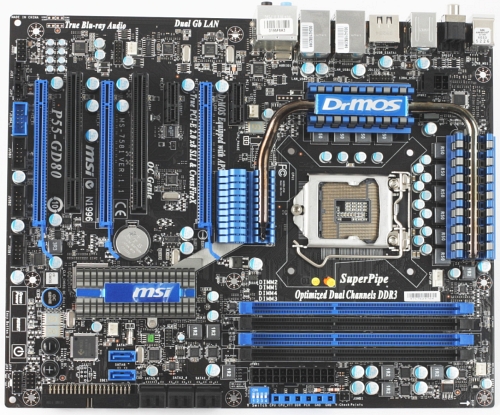
Layout:
This board is clearly targeting the high end market. With tons of accessories and a target price at €175 this board does not comes cheap.
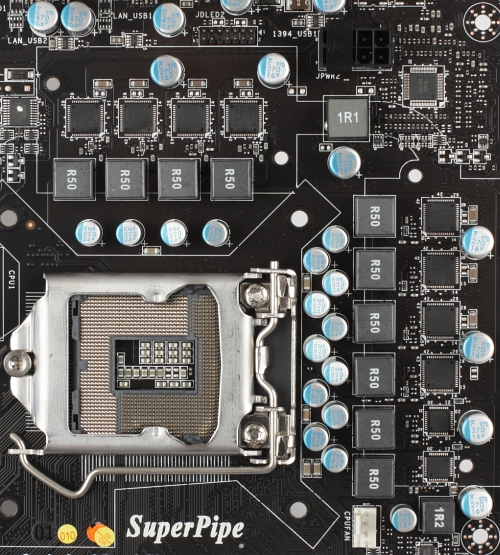
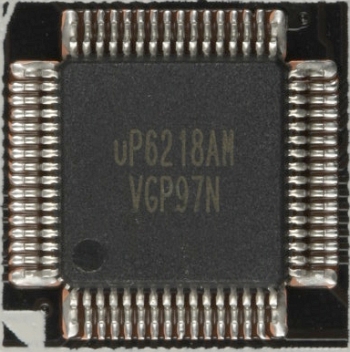
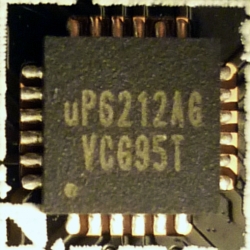
The VRM is an analog 8-phase design and as expected it features highly integrated RDS-ON MOSfets. While we were happy with the little brother we think the two phases more does not help the board in any case. It does of course increase power-consumption and overclocking is not improved.
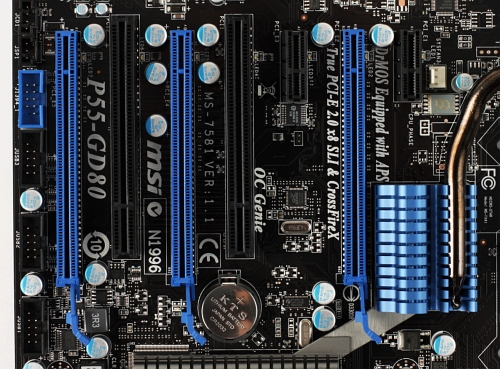
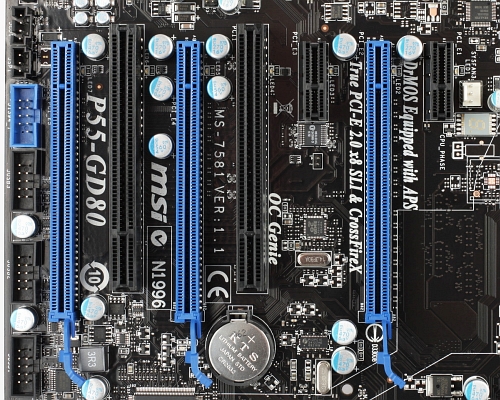
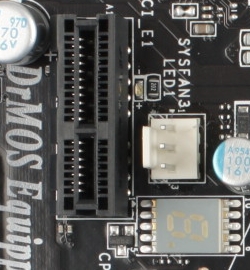
The slot design is very straightforward. Three PCIe 2.0 x16 slots are a bit hefty for our taste, because the most two-slot graphics-cards will block all but one PCI and PCIe slot. Lynnfield only supports one PCIe x 16, so using Crossfire or SLI sets you back to 2x x8. The third PCIe x16 slot comes from the PCH which allows only for PCIe 2.0 x2 speed. One of the problems with the board is the fake northbridge cooler which will block the first PCIe x1 slot. We can't understand what benefit it should bring and what massive heat it should dissipate. We think it's a waste of money, yes your money, because it's 100% unnecessary. One special feature is the single segment LED which shows how many phases are in use. A nice gimmick but we think not located on the right spot on the board.
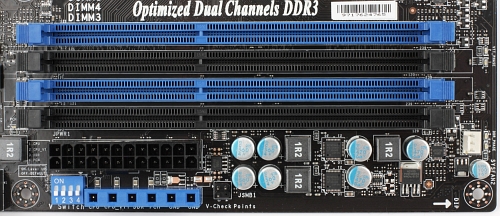
The memory slots are at a safe distance to the CPU socket but the power connector is really close. That is because MSI included a new feature called "V-Check" where you can take measurements of some voltages on the board if you have a multimeter.
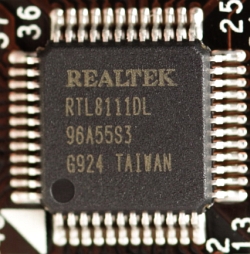
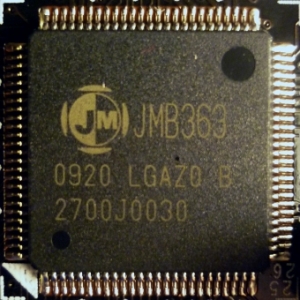
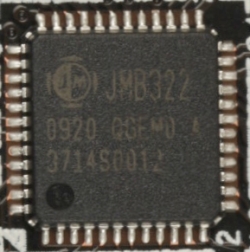
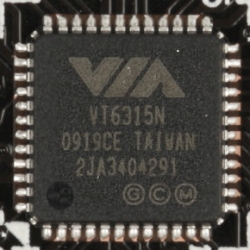
On a real high-end board a low-price solution even two of the RTL8111DL is quite disapointing. A Marvell, Broadcom or Intel chip would have been a better choice. Also the JMB363 is quite standard, it supports one PATA, and two SATA ports. One SATA port is used one the backpanel, so a JMB322 does multiply the remaining port. Of course that is not a very good solution if you will use both of them. Next time MSI, please remove such useless ports, and use a JMB362 for two eSATA ports. We think PATA ports are obsolete. The audio portion is provided by a standard Realtek codec, this time an ALC889. It's an improved version of the ALC888, but with higher signal-noise ratio and decoding capabilities for DTS and Dolby. At least MSI went the extra length and used a VIA PCIe Firewire controller.

The PATA and SATA connectors are on the edge of the board and all of them are angled at 90°. This is the best solution available because the connectors won't interfere with any cards.
BIOS:
The same we wrote about the GD65 is true for this board. The OC Genie features does the same as on the GD65 but the VTT is increased to 1.399V which much too high.
While MSI manages on AMD boards to clock on spot, they fail with Intel boards:
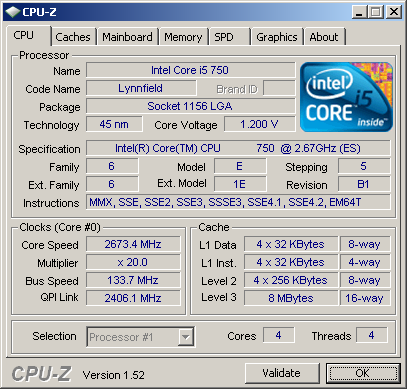
At it's price-level we expected 4GHz to run without problems and it did:
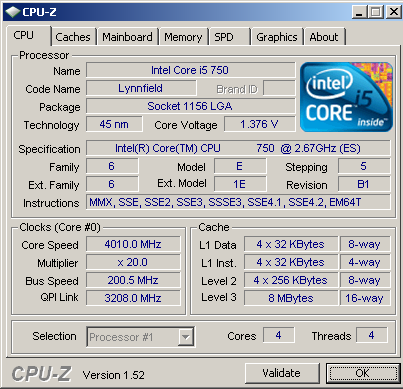
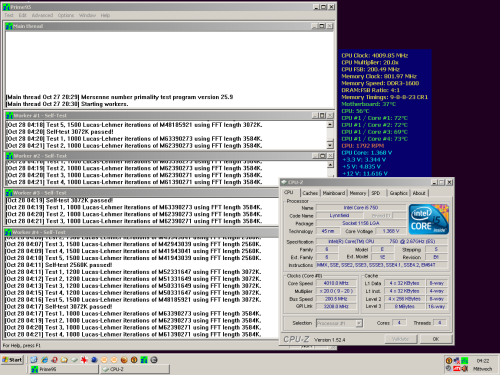
Of course undervoltaging is standard with MSI boards and it works with 1.00V with low vDroop or 1.03V with high vDroop.
